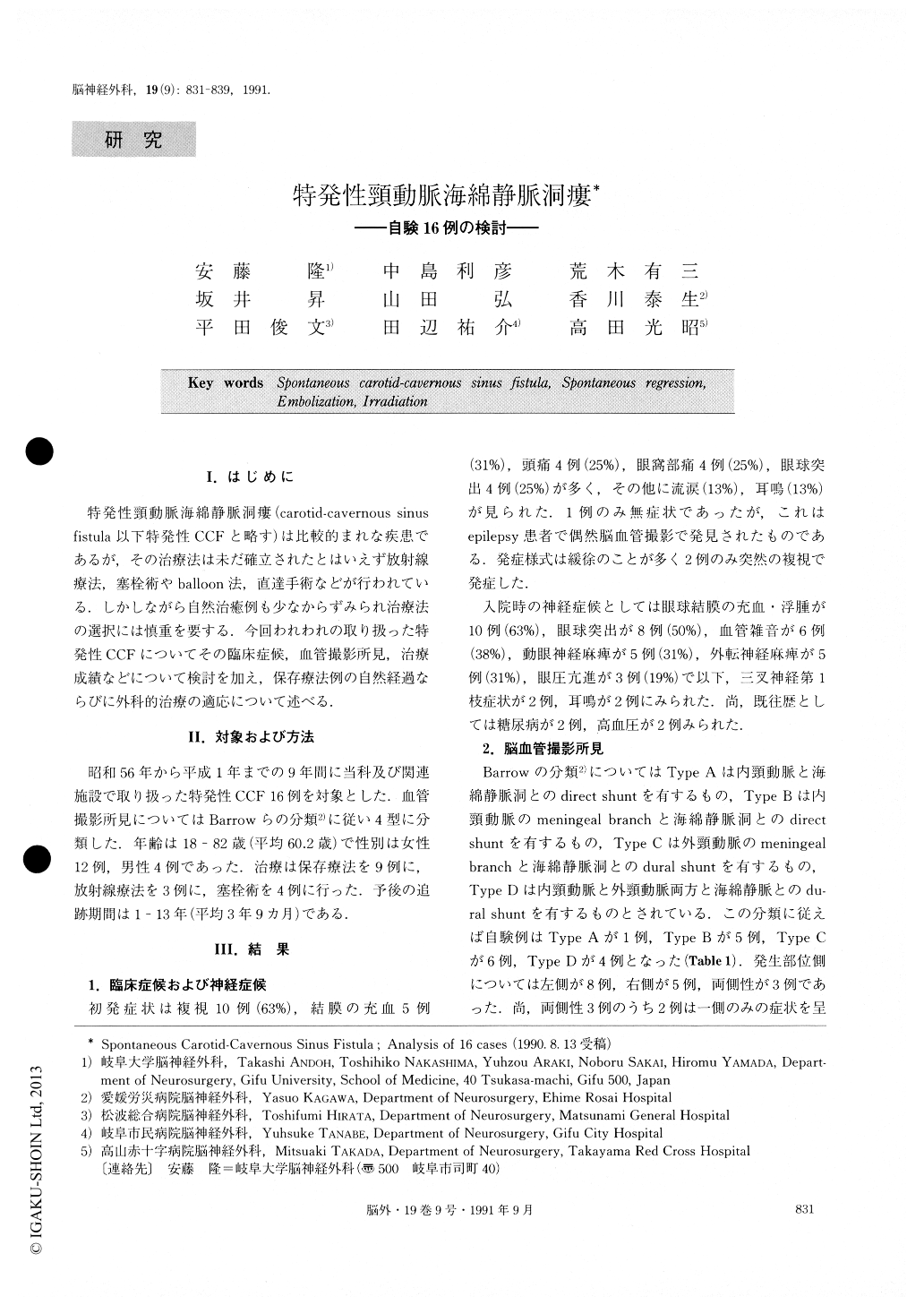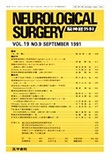Japanese
English
- 有料閲覧
- Abstract 文献概要
- 1ページ目 Look Inside
I.はじめに 特発性頸動脈海綿静脈洞瘻(carotid-cavernous sinusfistula以下特発性CCFと略す)は比較的まれな疾患であるが,その治療法は未だ確立されたとはいえず放射線療法,塞栓術やballoon法,直達手術などが行われている.しかしながら自然治癒例も少なからずみられ治療法の選択には慎重を要する.今回われわれの取り扱った特発性CCFについてその臨床症候,血管撮影所見,治療成績などについて検討を加え,保存療法例の自然経過ならびに外科的治療の適応について述べる.
Abstract
We have encountered 16 cases with spontaneous carotid-cavernous sinus fistula. According to the classi-fication reported by Barrow, one case was type A ; direct shunt between the internal carotid artery (ICA) and the cavernous sinus (CS) , 5 were type B ; dural shunt between meningeal branches of the ICA and the CS, 6 were type C ; dural shunt between meningeal branches of the external carotid artery (ECA) and the CS, and 4 were type D ; dural shunt between menin-geal branches of both ICA and ECA and CA. Of all cases, 8 patients with low-flow fistula treated conserva-tively improved spontaneously. Three patients were treat-ed with irradiation. Consequently, good results were obtained in 2 cases, but no improvement could be obtained in the remaining one with high flow fistula. Another four patients were treated with intravascular embolization via the ECA, and their symptoms im-proved. But one patient treated with Ivalon emboliza-tion died because of complicated pulmonary embolism. As spontaneous CCF had a high rate of spontaneous regression of symptoms, conservative treatment such as Matas manuever or irradiation should be recommended at first for low flow cases in type B, C, and D. Surgical therapy such as intravascular embolization should be carried out for high-flow cases in type C and D.

Copyright © 1991, Igaku-Shoin Ltd. All rights reserved.


